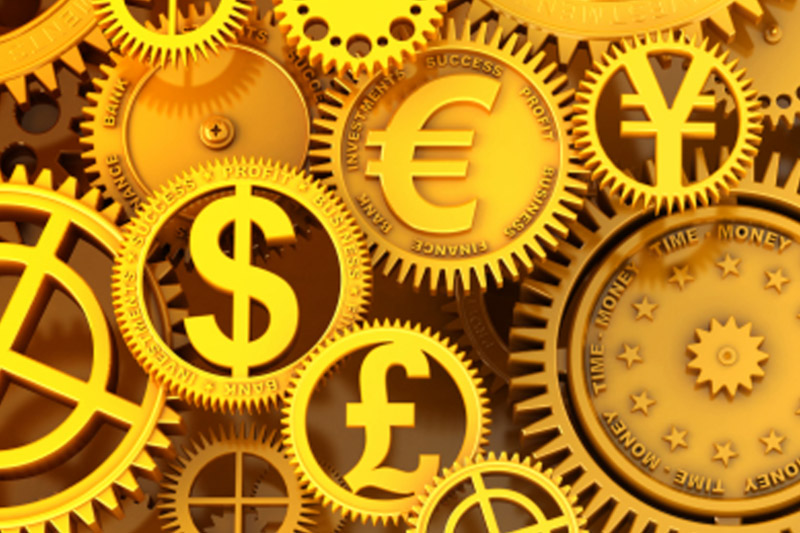Investing.com - The dollar regained ground against the yen on Wednesday, rebounding after Tuesday’s sharp falls sparked by fears that the era of central bank stimulus could be coming to an end.
During European afternoon trade, the dollar moved higher against the yen, with USD/JPY rising 0.64% to 96.62.
The dollar tumbled 2.7% against the yen on Tuesday following steep falls in Japanese equities after the Bank of Japan disappointed market expectations for measures to ease volatility in the government bond market.
The BoJ’s lack of action along with growing expectations that the Federal Reserve will begin to unwind its USD85 billion-a-month asset purchase program this year fuelled fears that global central banks are nearing the end of stimulus policies.
The dollar pulled back from three-and-a-half month lows against the euro, with EUR/USD sliding 0.22% to 1.3287.
The euro came under pressure amid concerns over rising peripheral euro zone bond yields after Italy saw borrowing costs rise to the highest level since March when the treasury auctioned EUR7 billion of 12-month bills at a yield of 0.96%, up from 0.70% previously.
The euro found some support after official data showing that industrial production in the euro zone rose for the third consecutive month in April fuelled hopes that the recession in the bloc may be ending.
Eurostat said industrial production rose by a seasonally adjusted 0.4% in April, defying expectations for a 0.2% decline.
Elsewhere, the greenback was fractionally lower against the pound, with GBP/USD easing up 0.05% to 1.5651.
The pound found support after official data showing that the number of people claiming unemployment benefits fell to the lowest level in two years in May boosted optimism over the economic recovery in the U.K.
The Office for National Statistics said that the claimant count in the U.K. fell by a seasonally adjusted 8,600 in May, better than expectations for a decline of 5,000 people.
The unemployment rate remained steady at 7.8% in April, in line with expectations.
The dollar pushed higher against the Swiss franc, with USD/CHF up 0.33% to 0.9276.
The greenback was broadly lower against its Australian, New Zealand and Canadian counterparts, with AUD/USD advancing 1.11% to 0.9527, NZD/USD rallying 1.47% to 0.7985 and USD/CAD down 0.29% to 1.0159.
A report by Westpac Banking Corporation on Wednesday showed that Australian consumer sentiment rose 4.7% in June, after a 7% decline the previous month, but indicated that gains could be short lived as concerns over the economic outlook lingered.
The dollar index, which tracks the performance of the greenback versus a basket of six other major currencies, was up 0.22% to 81.43.
During European afternoon trade, the dollar moved higher against the yen, with USD/JPY rising 0.64% to 96.62.
The dollar tumbled 2.7% against the yen on Tuesday following steep falls in Japanese equities after the Bank of Japan disappointed market expectations for measures to ease volatility in the government bond market.
The BoJ’s lack of action along with growing expectations that the Federal Reserve will begin to unwind its USD85 billion-a-month asset purchase program this year fuelled fears that global central banks are nearing the end of stimulus policies.
The dollar pulled back from three-and-a-half month lows against the euro, with EUR/USD sliding 0.22% to 1.3287.
The euro came under pressure amid concerns over rising peripheral euro zone bond yields after Italy saw borrowing costs rise to the highest level since March when the treasury auctioned EUR7 billion of 12-month bills at a yield of 0.96%, up from 0.70% previously.
The euro found some support after official data showing that industrial production in the euro zone rose for the third consecutive month in April fuelled hopes that the recession in the bloc may be ending.
Eurostat said industrial production rose by a seasonally adjusted 0.4% in April, defying expectations for a 0.2% decline.
Elsewhere, the greenback was fractionally lower against the pound, with GBP/USD easing up 0.05% to 1.5651.
The pound found support after official data showing that the number of people claiming unemployment benefits fell to the lowest level in two years in May boosted optimism over the economic recovery in the U.K.
The Office for National Statistics said that the claimant count in the U.K. fell by a seasonally adjusted 8,600 in May, better than expectations for a decline of 5,000 people.
The unemployment rate remained steady at 7.8% in April, in line with expectations.
The dollar pushed higher against the Swiss franc, with USD/CHF up 0.33% to 0.9276.
The greenback was broadly lower against its Australian, New Zealand and Canadian counterparts, with AUD/USD advancing 1.11% to 0.9527, NZD/USD rallying 1.47% to 0.7985 and USD/CAD down 0.29% to 1.0159.
A report by Westpac Banking Corporation on Wednesday showed that Australian consumer sentiment rose 4.7% in June, after a 7% decline the previous month, but indicated that gains could be short lived as concerns over the economic outlook lingered.
The dollar index, which tracks the performance of the greenback versus a basket of six other major currencies, was up 0.22% to 81.43.
